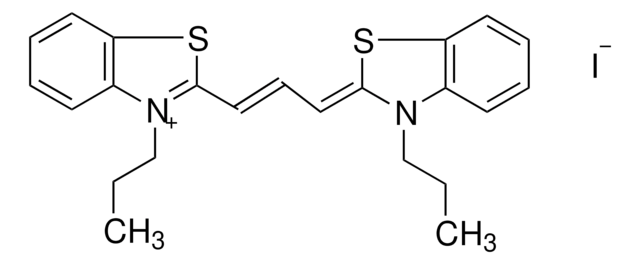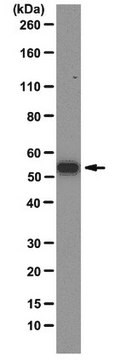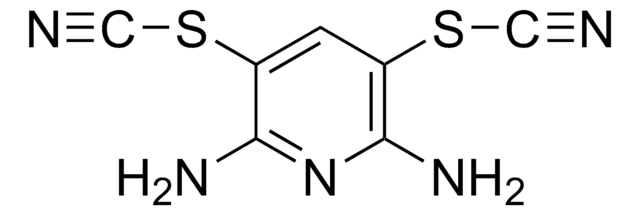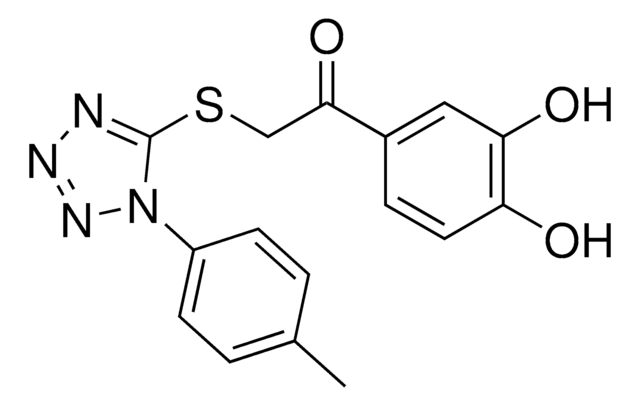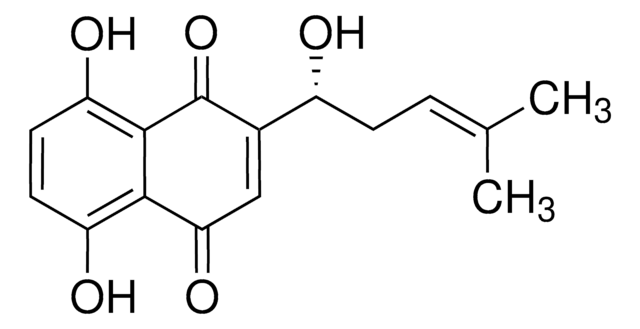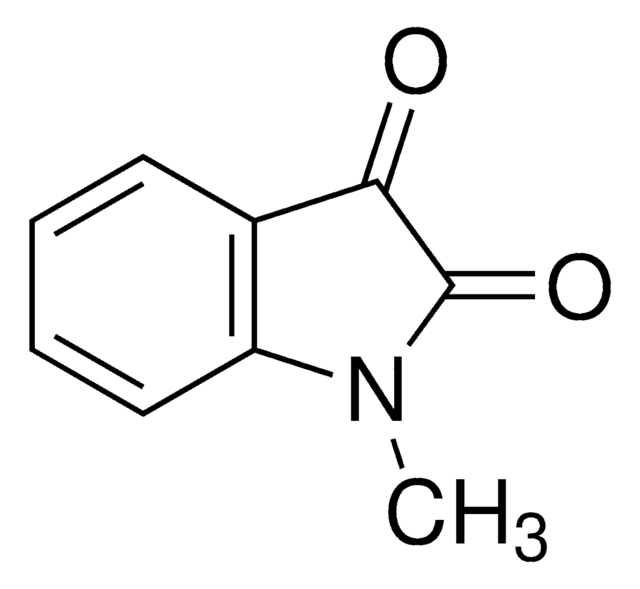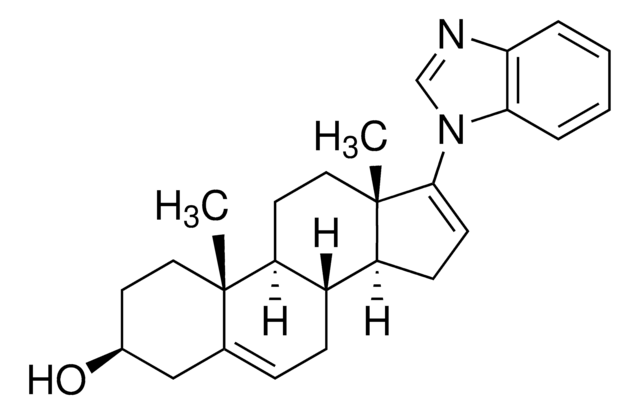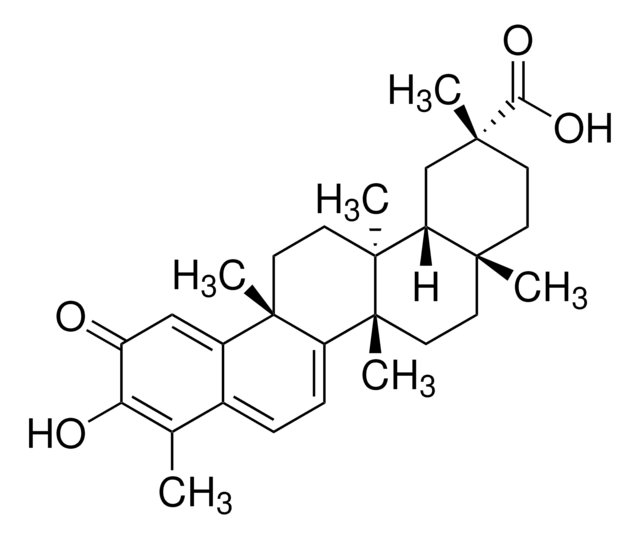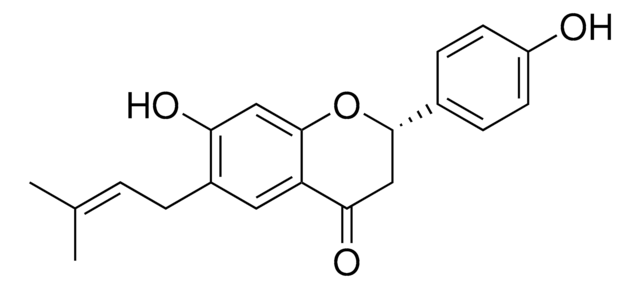추천 제품
분석
≥98% (HPLC)
양식
powder
색상
light yellow to dark yellow
solubility
DMSO: 10 mg/mL, clear
저장 온도
2-8°C
SMILES string
[s]1c(c(cc1C(=O)C)[N+](=O)[O-])Sc2c(c(ccc2)Cl)Cl
InChI
1S/C12H7Cl2NO3S2/c1-6(16)10-5-8(15(17)18)12(20-10)19-9-4-2-3-7(13)11(9)14/h2-5H,1H3
InChI key
LKZLGMAAKNEGCH-UHFFFAOYSA-N
관련 카테고리
애플리케이션
P5091 has been used:
- as a ubiquitin specific peptidase 47 (USP47) inhibitor in 3-(4,5-dimethylthiazol-2-yl)-2,5-diphenyltetrazolium bromide (MTT) assay to evaluate the cellular viability of MCF-10A cells
- as a USP7 inhibitor to study the regulatory role for USP7 on inflammasome activation
- as USP7 inhibitor in drug susceptibility assays to study its effect on bone marrow−resident tumor cells (BMRTCs)/ circulating tumor cells (CTCs)
생화학적/생리학적 작용
P5091 is a cell permeable, potent and specific inhibitor of deubiquitylating enzyme USP7 (Ubiquitin-Specific Protease-7) that induces HDM2 polyubiquitylation and accelerates degradation of HDM2. P5091 induces apoptosis in MM cells resistant to conventional and bortezomib therapies. P5091 inhibits tumor growth and prolongs survival in animal models of cancer.
P5091 is a cell permeable, potent and specific inhibitor of deubiquitylating enzyme USP7.
P5091 plays an important role in ovarian cancer, as it can prevent the growth of cells and can promote necrosis and apoptosis.
신호어
Danger
유해 및 위험 성명서
Hazard Classifications
Acute Tox. 3 Oral - Aquatic Chronic 4
Storage Class Code
6.1C - Combustible acute toxic Cat.3 / toxic compounds or compounds which causing chronic effects
WGK
WGK 3
Flash Point (°F)
Not applicable
Flash Point (°C)
Not applicable
가장 최신 버전 중 하나를 선택하세요:
12th International Detonation Symposium. null
11th Int. Conf. Adv. Prostagl. Leukot. Res. null
Sandhini Saha et al.
Cell death & disease, 13(6), 563-563 (2022-06-23)
Nutrient surplus and consequent free fatty acid accumulation in the liver cause hepatosteatosis. The exposure of free fatty acids to cultured hepatocyte and hepatocellular carcinoma cell lines induces cellular stress, organelle adaptation, and subsequent cell death. Despite many studies, the
Pablo Palazón-Riquelme et al.
EMBO reports, 19(10) (2018-09-13)
The assembly and activation of the inflammasomes are tightly regulated by post-translational modifications, including ubiquitin. Deubiquitinases (DUBs) counteract the addition of ubiquitin and are essential regulators of immune signalling pathways, including those acting on the inflammasome. How DUBs control the
자사의 과학자팀은 생명 과학, 재료 과학, 화학 합성, 크로마토그래피, 분석 및 기타 많은 영역을 포함한 모든 과학 분야에 경험이 있습니다..
고객지원팀으로 연락바랍니다.